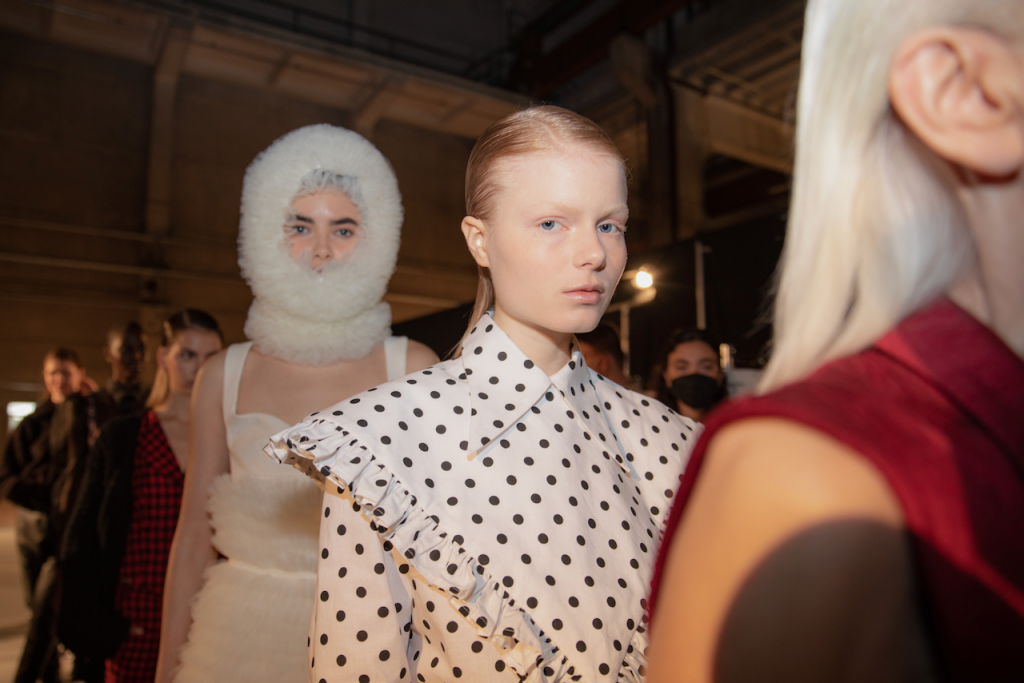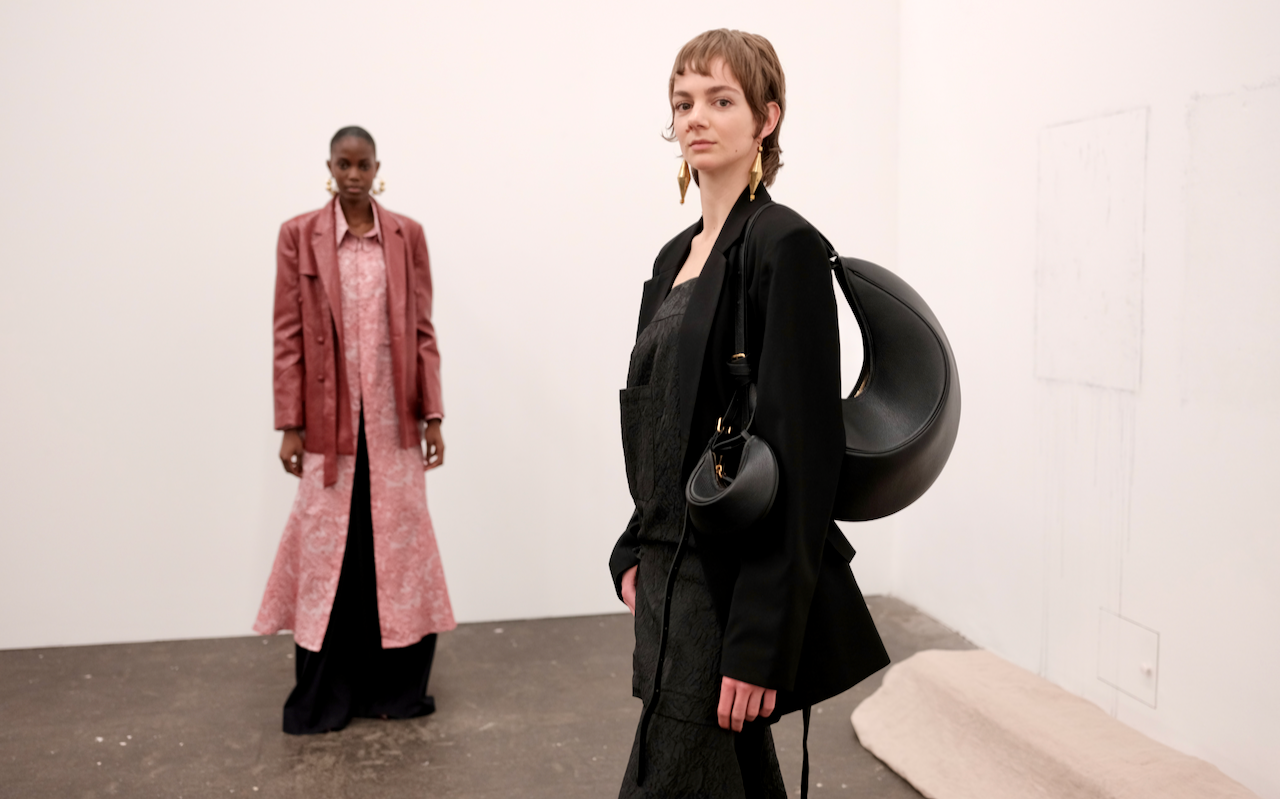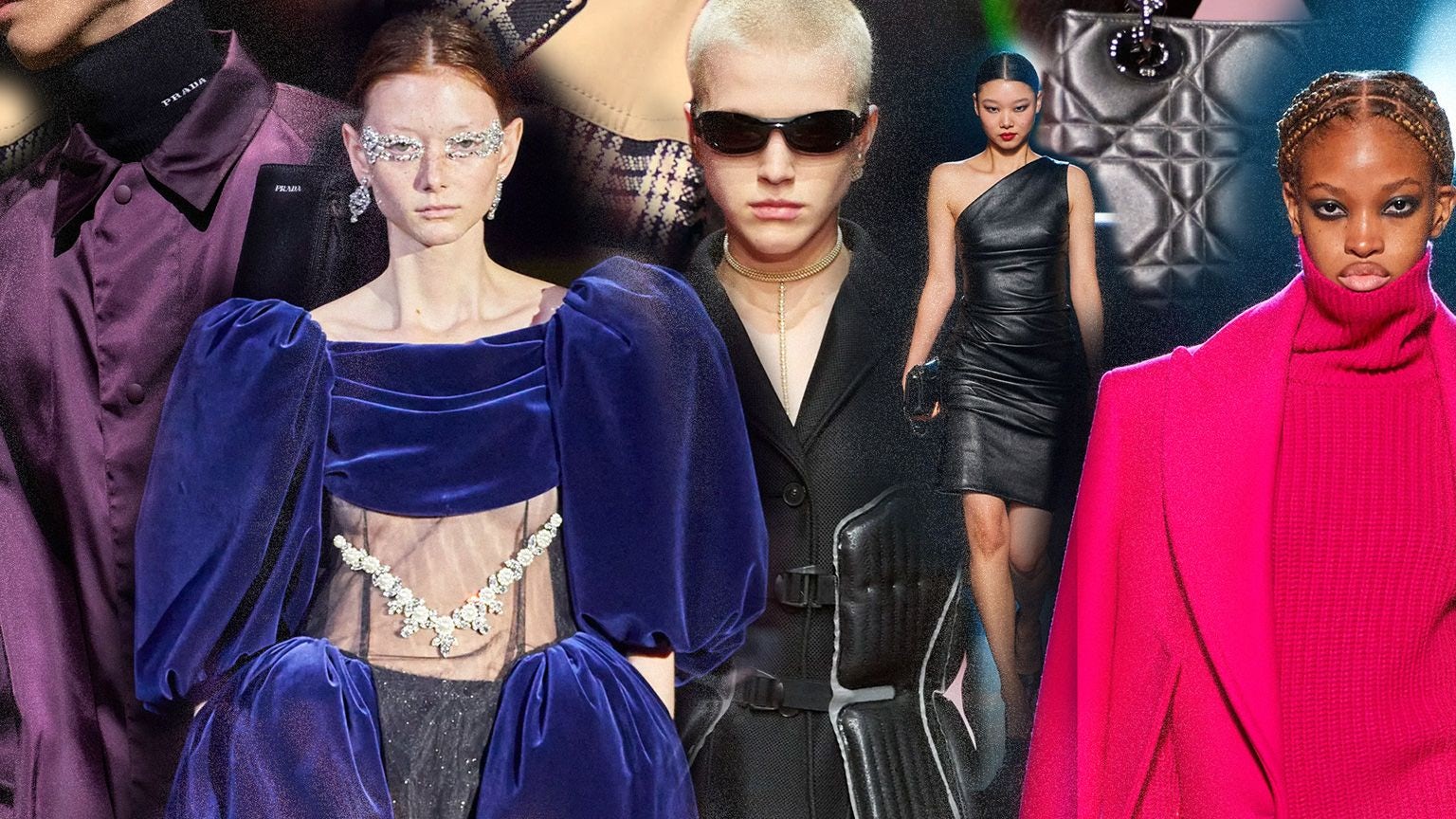What happened
From March 14-17, Germany’s capital held Berlin Fashion Week. Across the city, 141 brands (60 of which were sustainable) showed collections in art galleries, former warehouses, and nightclubs. Despite the lack of any big German names, the schedule curated a selection of niche, emerging labels in what was a fully physical event. Standout names included Rianna + Nina, Danny Reinke, Phillip Bree's PB 0110, Working Title and OBS. Chinese designer William Fan invited his models to dinner at the Museum der Gegenwart, where the collection featured colorful scarves bearing his name in Chinese and two new bags: one an interpretation of his quintessential fortune cookie model, and another in collaboration with Klarna.
The Jing Take
Fashion weeks and brands have struggled to connect with the China market since the outbreak of COVID-19. However, as Christiane Arp, President of the German Fashion Council confirmed, it’s a market that Berlin Fashion Week definitely “do not want to exclude.” Bain & Company anticipates its growth during the pandemic to continue, putting it on track to become the world’s largest luxury goods market by 2025 — regardless of future international travel patterns.
There is much potential for Berlin’s labels among sophisticated Chinese consumers. Their appetite for newness and individuality means that brands very much like those seen at Berlin (niche, emerging) are on the rise in the mainland. Research agency Insight & Info Consulting valued this growing independent designer sector at 8.1 billion in 2020 and predicts it will reach 12.1 billion by 2025.
Given the scale of this opportunity, Jing Daily suggests some steps the fashion week could take to grow its visibility in China.
Firstly, work with a local partner to build awareness. Fans already know about the event: Berlin Fashion Week has 300 UGC instances on niche fashion platform Xiaohongshu. By comparison, its closest rival Copenhagen Fashion Week — which has much bigger makes like Ganni and Li-Ning collaborator Souland — has only 800. On Weibo, a general hashtag for the event #berlinfashion week# has 1.65 million views. The appetite is there. Tencent Video has been partnering with Paris and Milan to livestream shows directly to millions of viewers. A similar affiliation would help amplify the event to domestic audiences.
Next: leverage influencers. William Fan’s work has already been seen on popular idol Liu Yuxi, who has a predilection for niche brands — and 21.9 million followers. Berlin innovators GmbH have also been supported by Liu. An interesting case, GmbH (stocked in Galeries Lafayette, Joyce, and SKP) has 3,200 UGC on Xiaohongshu as well as a partnership with established local name Mo&Co; their collection was worn by the celebrity Yang Mi (with 100 million Weibo followers). Obviously, Chinese KOLs based in the west could be a useful addition to the front rows.

Thirdly — go digital. As China shows no signs of opening up any time soon, Berlin Fashion Week could look to virtual showrooms to connect with buyers. Bridal company Kaviar Gauche is already livestreaming appointments to Chinese buyers who buy couture garments sight unseen. German labels have been slower to debut on e-commerce platforms given the logistics and financial investment they require. Now that German e-tailer MyTheresa has just debuted on JD.com, it could help to cultivate Made in Berlin through its channels. According to JD.com, logo-centric leatherwear business MCM — who launched a flagship with it this month — has seen turnover increase 18 times month-on-month in the first two hours on March 4.
Finally, the fashion week could bring China to Berlin. Imagine: what if they invited emerging Chinese designers to showcase at the event, or collaborate with the city’s progressive multi brand stores such as Voo Store and Andres Murkudis? These places aren’t selling China's must-have guochao names. But, with the right strategy, they soon could be.
The Jing Take reports on a piece of the leading news and presents our editorial team’s analysis of the key implications for the luxury industry. In the recurring column, we analyze everything from product drops and mergers to heated debate sprouting on Chinese social media.

